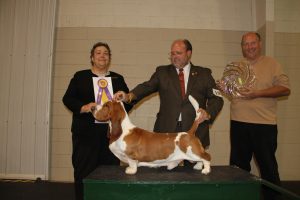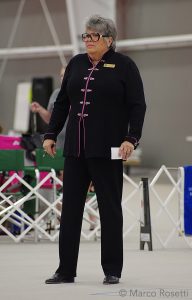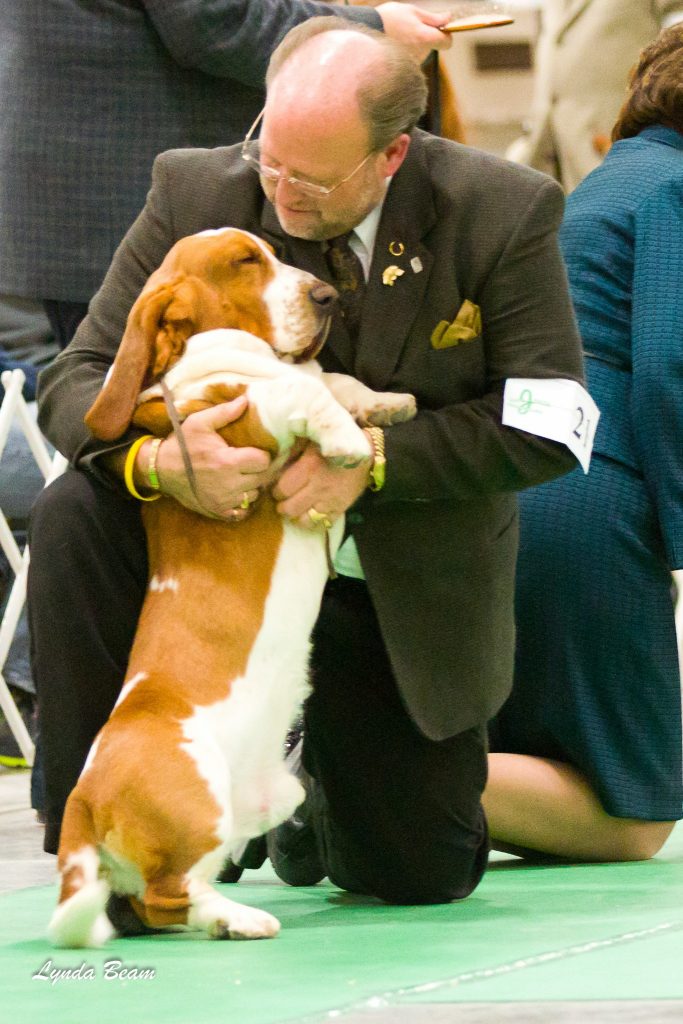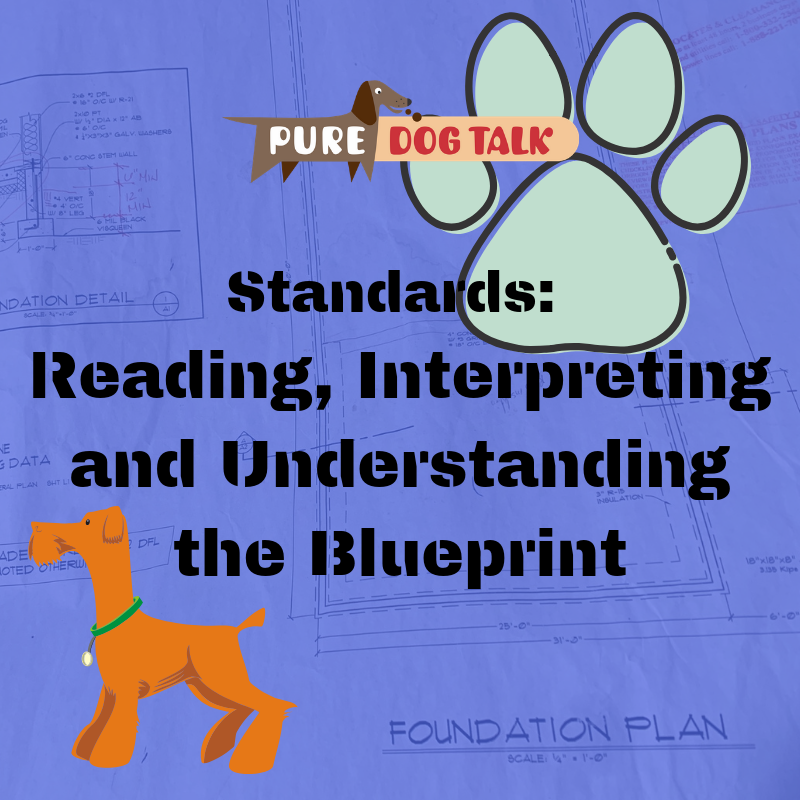478 — Bryan Martin: Read Your Standard and Dream BIS Line up
Bryan Martin: Read Your Standard and Dream BIS Line up
 Bryan Martin, retired professional handler, former AKC executive field representative and newly minted Hound group judge joins host Laura Reeves for part two of his amazing stories and advice for exhibitors.
Bryan Martin, retired professional handler, former AKC executive field representative and newly minted Hound group judge joins host Laura Reeves for part two of his amazing stories and advice for exhibitors.
“My family would have dinner (and) during dessert, the book of standards came on the table. We had weekly discussions. ‘OK let’s talk about heads tonight.’ We’d go round the table and everyone would say something and ‘OK who do you think has a good head? Who do you think has a bad head? Do you have a picture? Go get a picture.’ One night we’d talk about shoulders and why the shoulder needs to be a wrap-around, why the shoulder needs to be well laid back, why the shoulder blade and the upper arm have to be the same length, to make it a proper working hound, how the back end has to match the front end… How the pieces fit. It’s form and function, which has stuck with me forever, and that’s my basis is form and function judging.
“It’s amazing how many people in AKC, UKC … have no understanding how to read a standard. How to interpret a standard and how to go to somebody and talk to somebody about the standard. The how’s why’s and wherefores of studying standards. At the International show where we had to write a critique, we had to know the standards. What I ended up doing was showing people what the standard says about their dog. And they say ‘oh, I didn’t know that’ and it’s a whole educational program that is missed.”
In the “Dream Best In Show Lineup” game, Martin’s choices were:
Sporting – English Springer Spaniel, Ch Salilyn’s Aristocrat
Hound – Afghan Hound, Ch Triumph Of Grandeur
Working – Doberman Pinscher, Ch. Brunswig’s Cryptonite
Terrier – Scottish Terrier, Ch. Braeburn’s Close Encounter
Toy – Japanese Chin, GCh. Pem We-Syng Lucky MI
Non-Sporting – Dalmatian, Ch. Spotlight’s Spectacular
Herding – German Shepherd Dog, GCh. Altana’s Mystique
Finally, Best in Show in this mythical lineup??
Shannon, the Scottish Terrier, shown by George Ward.
Listen above to hear all of this and more.
297 – Standards: Reading, Interpreting and Understanding the Blueprint
Standards: Reading, Interpreting and Understanding the Blueprint
 Nannette Newbury, judges education coordinator for United States Australian Shepherd Association, breaks down breed standards.
Nannette Newbury, judges education coordinator for United States Australian Shepherd Association, breaks down breed standards.
Newbury’s presentation will help you understand: What are the parts of the standard, what’s a good and bad breed standard, what’s open to interpretation and what isn’t.
Breeders use the standard one way, judges have to use it another way, Newbury noted.
“That judge had to weigh a lot more than soundness,” Newbury said. “What good is it if a dog looks like a coyote and it’s sound. Judges can only go by what’s in the breed standard.”
How to apply the breed standard
Understanding the essence of the breed has to be a priority for judge or breeder, Newbury observed.
When dog shows began, folks had to come up with a way to compare and contrast dogs. The breed standard has to distinguish one breed from another.
“Our breeds came first and then we wrote standards,” Newbury said. “In order to read, interpret and apply a breed standard, you have to have a knowledge of canine anatomy, physiology, structure. It takes time to learn.”
Flaws, faults, implied faults
The breed standard is not a list of negative aspects, Newbury opined, rather it describes ideal.
Hallmarks of a breed are what make it distinct from all others and should be part of a good breed standard.
“If all dogs were perfect, judging would be easy. In the real world, deciding which quality or fault is more or less important and awarding accordingly is the quintessential job of the judge,” Newbury said. “As breeders, you pick your poison. Markings or fronts or whatever, you pick your poison. Judges do the same thing.”
Anything that deviates from the standard is a fault, Newbury noted, while the degree of deviation determines the severity of the fault.
“Go through (your breed) standard and list virtues and ideals. If the virtue affects the original function of the dog, consider those more important,” Newbury said.
“Anybody can find a fault. The hardest thing to do when evaluating a dog is to look at a dog, even one that is of poor quality, and find something good to say about it. It is a gift to be able to find the virtues in a dog.”
There’s always more to learn! Check out the archive!


